The Putin re-election campaign is now complete. And, as predicted, Putin won in a landslide. Putin received 87.28% of votes cast, with a turnout of 77.44%. AP News notes that:
After the harshest crackdown on dissent since Soviet times, it was clear from the earliest returns that Putin’s nearly quarter-century rule would continue with a fifth term that grants him six more years.
With his re-election campaign in the rear view mirror, what might this mean for Putin’s military strategy as we approach the northern spring and summer? This article provides assumptions and a worst case scenario on how the Russian strategy for 2024 in Ukraine might play out.
Clearly, the main effort for the Russian military will remain its campaign to subjugate Ukraine by degrading and destroying its tactical forces, conducting strike operations against operational, strategic and civilian targets, and its ongoing diplomatic and strategic influence operations.
Supporting efforts in this overall strategy will include air, cyber, ground and maritime military operations elsewhere along its border with NATO countries including Finland and the Baltics, restructuring of the Russian military districts, formation of two new armies and 30 other formations and continued collaboration with China, Iran and North Korea.
Putin’s Post-Election Options
Putin has three obvious options for the war after the Russian election.
First, he might decide to continue the war at its current tempo, dragging it out with lots of smaller operations across multiple areas of a very long frontline in Ukraine, as well as periodic missile and drone strikes.
Second, Putin might decide to step up operations once the climatic, logistic and manpower conditions are set for a larger scale offensive sometime in the northern spring or summer.
Finally, he can decide to call it quits and return all his military forces and return to pre-2014 borders. The likelihood of this is zero, but it had to be mentioned as an option.
While the first option might at first appear attractive to Putin, even he can appreciate how the Europeans are slowly but inevitably stepping up their defence production capabilities. The longer he continues the war, the more capable the European defence industry - and their military forces - will become. While Putin understands that western polities are impatient, he will probably give greater weight to the fact that the longer the war continues, the more powerful European military capacity will become. With aspirations of regional dominance, this would not be an outcome preferred by Putin.
The third option is probably off the table. Putin’s rhetoric before and during the war, through to his victory speech this week, indicates total commitment of his nation to the defeat of Ukraine. While this may not include the takeover of all Ukrainian territory in the short term, it probably includes at least advancing to more defensible terrain in western and southern Ukraine in 2024.
As such, Putin most likely sees 2024 as an opportunity when U.S. support is lacking, European defence capacity is not yet at a point where it can provide decisive support to Ukraine, and the Ukrainian military capacity is in a reconstitution and institutional transformation stage. A decisive blow against Ukraine this year, which results in seizing significant portions of territory, might see U.S. support for the war decline even further and result in greater pressure on the Ukrainian government to negotiate some kind of ceasefire or armistice.
While this would be a disaster for Ukraine and Europe, it would be very advantageous for Putin and Russia. Therefore, Putin’s most likely course of action - and the most dangerous for Ukraine - is another larger offensive some time this year.
The Road to a Larger Russian Offensive
For several months, the Russians have been conducting tactical actions to advance in the eastern and southern parts of Ukraine. Some are opportunistic, which take advantage of Ukrainian force and artillery shortfalls and the local terrain to make small gains in territory.
Other Russian attacks are deliberate attempts to retake ground lost in Ukrainian offensives in 2022 and 2023. The overall effect however is a large-scale operational level collection effort to ascertain Ukrainian physical force dispositions, unit and formation strengths, the evolving capabilities of Ukrainian drone and electronic warfare complexes, as well as reserve force locations, composition and deployment processes.
None of the current Russian operations are at the scale, or appear designed, to achieve a significant breakthrough of Ukrainian defenses. Military organisations must ‘fight for information’ in order to ‘fight with information’.

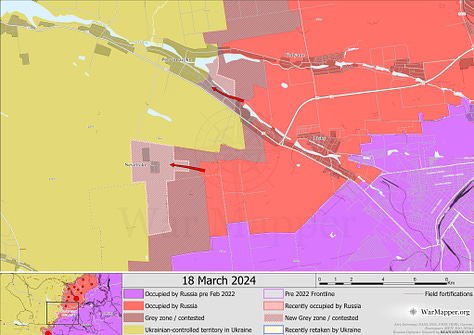

Coupled with extensive aerial, ground and satellite surveillance (which according to reports may now include the use of U.S. satellite imagery), Russian offensive operations will also be developing for the Russians a broader picture of Ukraine’s current efforts to construct defensive lines across the front line.
The Russians will correlate their understanding of the new Ukrainian defensive lines with how their own defensive lines worked, and where they didn’t, in the south. They will be seeking to understand secondary and tertiary defensive lines, as well as Ukrainian counter attack and counter penetration routes.
In this complex undertaking, the Russians may also be adapting their tactical doctrine and training for ground forces so that they have a better chance of success in two key elements of any large-scale offensive. The first is the ‘break in’ battle, which is the combined arms attack into defended areas and the fight through of the defensive zone. This includes use of artillery, electronic warfare (EW) and drones for suppression, destruction, obscuration and deception, as well as the combined arms close combat inherent in such operations.
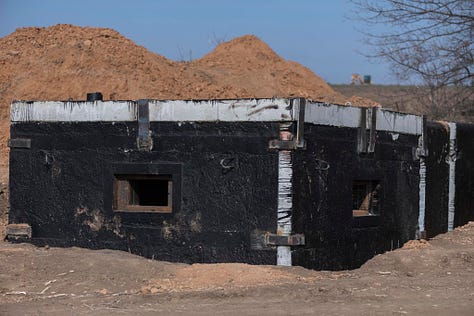
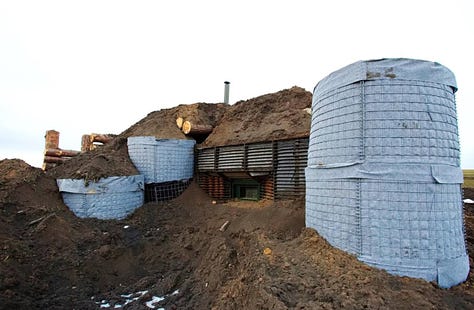

The second element of doctrinal and training innovation required by the Russians is ‘break through’ operations, for which a precursor is a successful ‘break in’ and fight through successive defensive lines as well as the interdiction of reserve foces and counter battery and drone fight. No one has achieved this since 2022 in this war, and just as both sides on the western front in World War spent several years experimenting with ideas for an operational breakthrough, so too will the Ukrainians and Russians need to rethink their doctrine, organisations, training and concepts of operations to achieve it in Ukraine.
It is prudent to make these assumptions about Russian preparations for a larger scale offensive in 2024. Russia has shown the ability to learn and adapt, even if it is often slower than Ukraine in doing so, and that adaptation is uneven across their forces. But we can be assured that the Russians will have watched the failure of Cold War NATO doctrine (and inability to coordinate higher level combined arms) in the 2023 Ukrainian counteroffensive and will have learned from it.
Concurrent with this learning and adaptation, the Russians are likely to be building up munitions stockpiles, and continue using its glide bombs and UAV/FPV operations to support current and future ground operations. Any targetable concentrations of such stocks should be a priority target for Ukrainian operational targeteers.
Russian Enablers for a Larger Scale 2024 Offensive
There are some strategic enablers which Russia will need to get right before any larger ground offensive in 2024 however.
First, it needs to probably undertake another large scale mobilization to provide a pool of replacements. Any large offensive will inevitably result in large casualties given the Russian style of fighting. And Ukraine’s excellence at killing Russians. It may not call such an effort ‘mobilisation’, but it must almost certainly expand the size of its army, in accordance with announced plans and possibly beyond, in order to conduct a larger scale offensive in 2024 and undertake missions in other areas bordering NATO countries.
Second, Russia will need to build up munitions through indigenous production and imports from countries like North Korea. Big offensives are big consumers of munitions. Russia has already recieved thousands of containers of munitions from North Korea, but it is uncertain how much more North Korea has to give. At the same time, Russia has stepped up domestic production of munitions and drones. It now produces about 250,000 rounds of artillery each month according to this report, which places it significantly ahead of U.S. and European production (at present). The war of industrial systems, which I explored here, will continue and will provide a foundation for Russian preparations for any 2024 general offensive.
Third, it will need to somehow address its problem with armoured fighting vehicle (AFV) production and supply. Russian has lost thousands of these vehicles over the past two years. While it has thousands of old vehicles in storage, the more it draws on this, the older the vehicles are and harder to recondition for combat. And, it will need to continue adapting its employment of armoured vehicles - main battle tanks, IFVs, APCs and other armoured support vehicles - to ensure they are survivable in an environment where drones are ubiquitous and can rapidly detect, swarm around and destroy tanks and other AFVs.
As an aside, the Kyiv Independent recently ran an article that explored just how many tanks Russia has left. You can read it here.
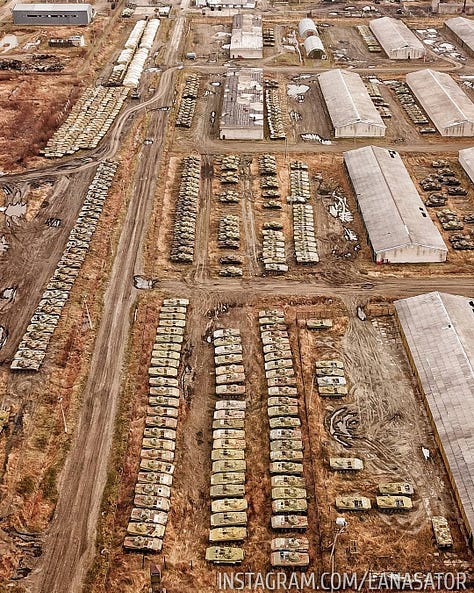
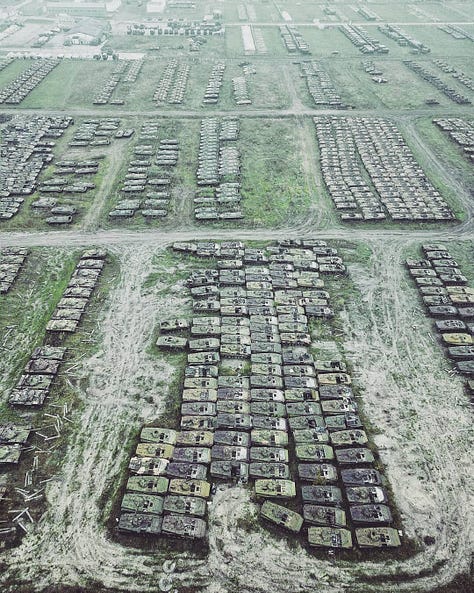
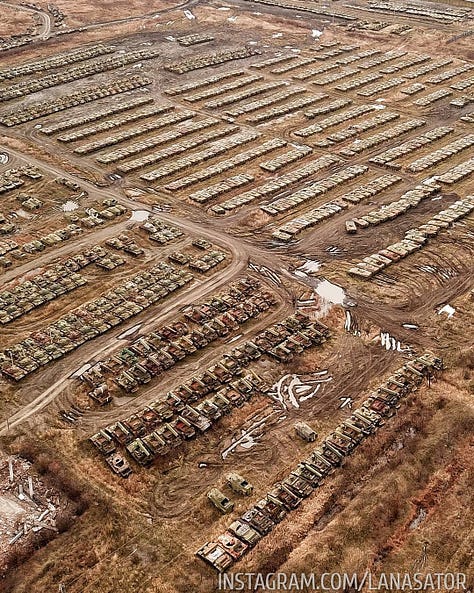
Fourth, Russia will need to address Ukraine’s integrated air, missile and drone defence network which continues to improve. This network has proven remarkably resillient and has constantly adpated to Russian threats. However, a key targetable Ukrainian weakness is expensive interceptors provided by the West. As such, the Russians are likely to continue to probe the Ukrainian air defence network, attack radar and launcher sites if possible, and induce the Ukrainians to launch expensive missiles at aerial targets.
The arrival of F16s for the Ukrainian Air Force this year will complicate Russia’s challenge in this regard. And they will need to continue to adapt to Ukrainian drone operations.
Fifth, Russia must degrade Ukrainian tactical and operational collection efforts. The aim of this would be to generate uncertainty and hopefully (for Russia), surprise against the Ukrainians. It can’t do much about European and US surveillance satellites however and the sharing of intelligence gleaned from foreign intelligence agencies.
Russia’s strategic and operational deception in the lead up to any large-scale offensive would be vital. This was missing from the 2023 Ukrainian counteroffensive. Surprise is much harder to achieve with contemporary integrated civil-military sensor networks that both the Ukrainians and Russian operate. But, it is not impossible.
Sixth, the Russians may be thinking about ‘what happens if a major offensive is successful’? For example, might a large scale Russian victory in a 2024 offensive prompt a greater NATO intervention including, as Macron has hinted, the deployment of NATO troops? Or, alternatively, might a successful Russian offensive in the coming months lead to a crisis of confidence in western capitals they can exploit? Russian planners and strategic leaders will almost certainly be wargaming such possible outcomes among a range of others.
Finally, an inevitable part of Russia’s approach to its 2024 operations, including any step up on offensive operations, will be nuclear threats. Putin has done this throughout the war. Most recently he issued the following warning:
Everything that the west comes up with creates the real threat of a conflict with the use of nuclear weapons, and thus the destruction of civilisation.
It is almost instinctive for Russia to apply the nuclear ‘escalate to de-escalate’ method to deter greater NATO involvement. It is very likely to be used again in 2024.
The Months Ahead
Putin’s speeches and comments this year indicate he is willing to double down on his subjugation of Ukraine. Now his ‘election’ is out of the way, he can dedicate more time and resources to that end.
It is likely that the current Russian aerial and ground operations are a prelude to Russia undertaking a larger scale offensive operation at some time in 2024. They will seek to maximise territorial gain while also creating as many Ukrainian casualties as possible. This would create a difficult, two-sided military and political problem for the Ukrainians and would potentiall see increased diplomatic pressure on them for some kind of negotiated outcome in the short term.
This would be catastrophic for Ukraine.
It is now up to Western countries to ensure they provides all necessary support to defend Ukraine in 2024 as it reconstitutes forces, and as the West rebuilds its industrial capacity to match the current production of the ‘arsenal of authoritarians’.




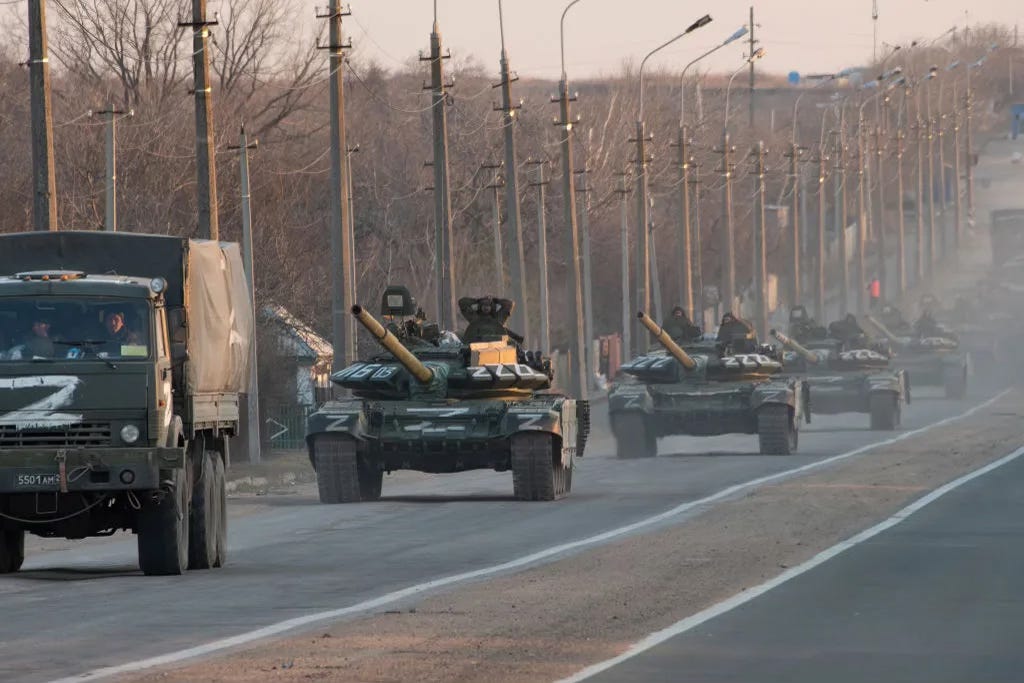
Thank you for your work Mick, clear and logical as always. Time for the"free world" to step and give Ukraine all it can. THIS is the fight, we should not be hanging on to resources just in case we need them later. If we give now , we will not need them later. If we fail to act now, our fears will be realised.